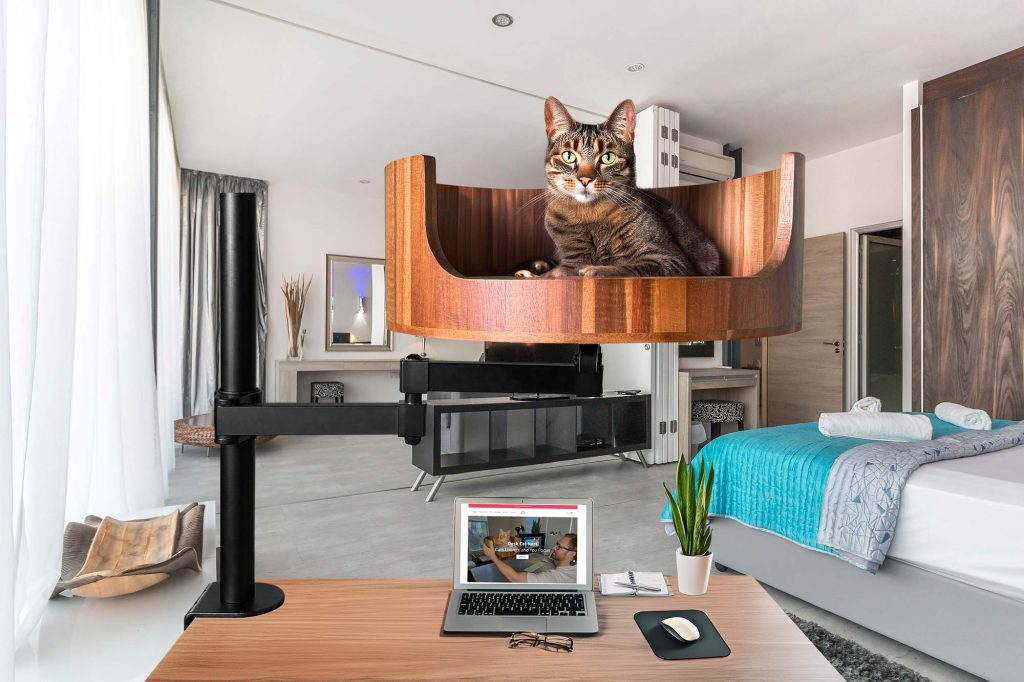Have you ever felt like your cat is constantly yelling at you, with no idea what they’re trying to communicate? If so, you’re not alone. Many cat owners struggle to understand their feline companion’s unique form of communication. In this article, we will delve into the world of feline communication, helping you decipher the messages your cat is trying to convey when they meow, hiss, purr, or growl.
From vocalizations to body language, cats have a wide range of ways to communicate with their human counterparts. By understanding these cues, you can better respond to your cat’s needs and build a stronger bond with them. We will explore the different types of meows and what they could mean, as well as delve into the significance of purring and why cats may hiss or growl in certain situations. By the end of this article, you will have a better grasp of feline communication and be able to decipher what your cat is trying to tell you when they meow incessantly or exhibit other behaviors.
1. Cats use a variety of vocalizations to communicate with their human companions, including meowing, purring, hissing, and yowling.
2. Understanding the context and body language accompanying vocalizations can help decipher the message your cat is trying to convey.
3. Yowling may indicate distress or discomfort, while purring can signify contentment or relaxation.
4. Pay attention to your cat’s pitch, volume, and frequency of vocalizations to gain insight into their emotional state.
5. Building a strong bond with your cat through regular interaction and positive reinforcement can enhance communication and strengthen your relationship.
Understanding Feline Communication
Feline communication involves a variety of vocalizations, body language, and behaviors that cats use to express their needs, emotions, and intentions. Cats rely heavily on non-verbal cues such as tail movements, ear positions, and eye contact to communicate with their human caregivers and other cats. By observing and interpreting these signals, cat owners can better understand their pet’s moods and respond accordingly.
Common Reasons Why Cats Yell at Their Owners
Cats may yell at their owners for a variety of reasons, ranging from seeking attention or affection to expressing discomfort or distress. Some cats are naturally more vocal than others, while others may vocalize more frequently when they are hungry, lonely, or in pain. Understanding the context and timing of your cat’s vocalizations can help you determine the underlying cause and address any potential issues.
Responding to Your Cat’s Vocalizations
When your cat yells at you, it is important to pay attention to the tone, volume, and frequency of their vocalizations. Responding calmly and attentively can help reassure your cat and strengthen your bond. Providing enrichment, such as interactive toys, scratching posts, or climbing structures, can also help alleviate boredom and reduce excessive vocalization. In some cases, consulting with a veterinarian or animal behaviorist may be necessary to address underlying medical or behavioral issues contributing to your cat’s vocalizations.
Case Study: The Desk Cat Nest
One common scenario where cats may yell at their owners is when they are seeking a cozy and comfortable spot to rest. For example, consider the case of a cat owner who noticed their cat vocalizing loudly while they were working at their desk. After observing their cat’s behavior and vocalizations closely, the owner realized that their cat was trying to communicate a desire for a cozy new resting spot near their workspace. By providing a soft blanket or cat bed on the desk, the cat’s vocalizations decreased significantly, and both the owner and cat were able to enjoy each other’s company in a more harmonious manner.
## Frequently Asked Questions
### Can Desk Cat Nest help prevent my cat from yelling at me?
While Desk Cat Nest can provide your cat with a cozy and comfortable space to relax and unwind, it may not directly address the underlying reasons for your cat’s behavior. It’s important to try to identify and address the root cause of the yelling, such as stress, anxiety, or boredom, in order to effectively change your cat’s behavior.
### How can I use Desk Cat Nest to create a calming environment for my cat?
Desk Cat Nest can be placed in a quiet and safe location in your home, away from high-traffic areas and loud noises. You can also add familiar items, such as your cat’s favorite blanket or toy, to make the space even more inviting. Additionally, consider using pheromone diffusers or calming supplements to help reduce your cat’s stress levels.
### Will Desk Cat Nest keep my cat entertained and engaged?
While Desk Cat Nest can provide your cat with a comfortable place to rest and relax, it may not be enough to keep your cat entertained and engaged all day. Make sure to provide your cat with plenty of interactive toys, scratching posts, and playtime to help prevent boredom and reduce the likelihood of yelling behavior.
### Can Desk Cat Nest be easily cleaned and maintained?
Desk Cat Nest is designed with removable and washable covers for easy cleaning and maintenance. Simply follow the care instructions provided with your Desk Cat Nest to keep it looking clean and fresh for your cat.
In conclusion, a Desk Cat Bed can greatly benefit a cat who constantly yells at their owner. By providing a cozy and comfortable retreat right at your desk, you are able to spend quality time with your furry friend while working. This can help reduce anxiety and stress in your cat, leading to less yelling and more peaceful interactions. Additionally, the Desk Cat Bed can help create a designated space for your cat, giving them a sense of security and ownership. Overall, investing in a Desk Cat Bed is a valuable choice that can improve the bond between you and your feline companion while providing them with a safe and comfortable space to relax.


